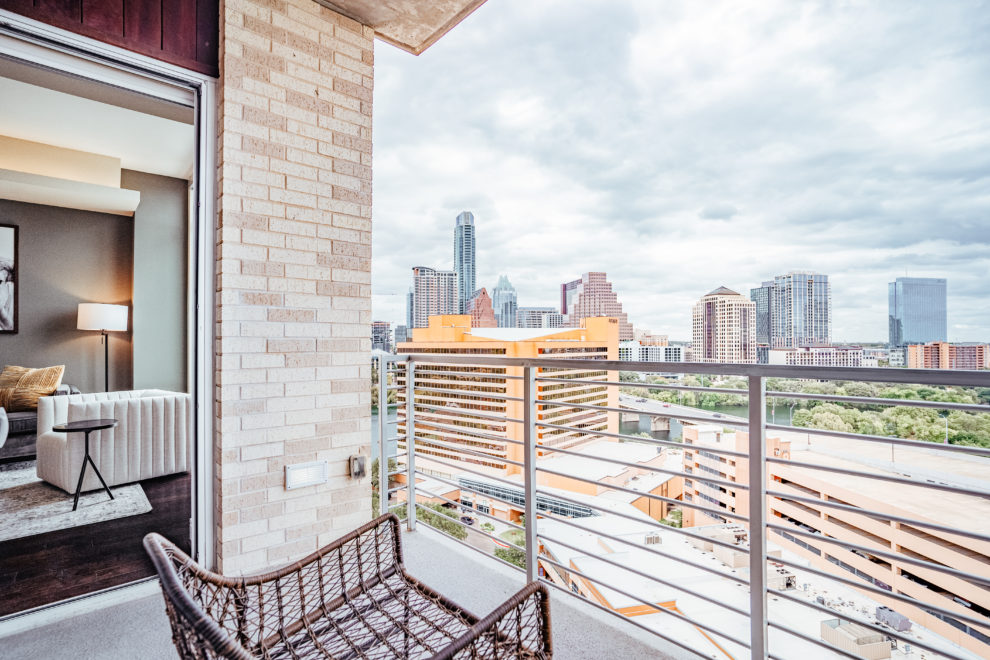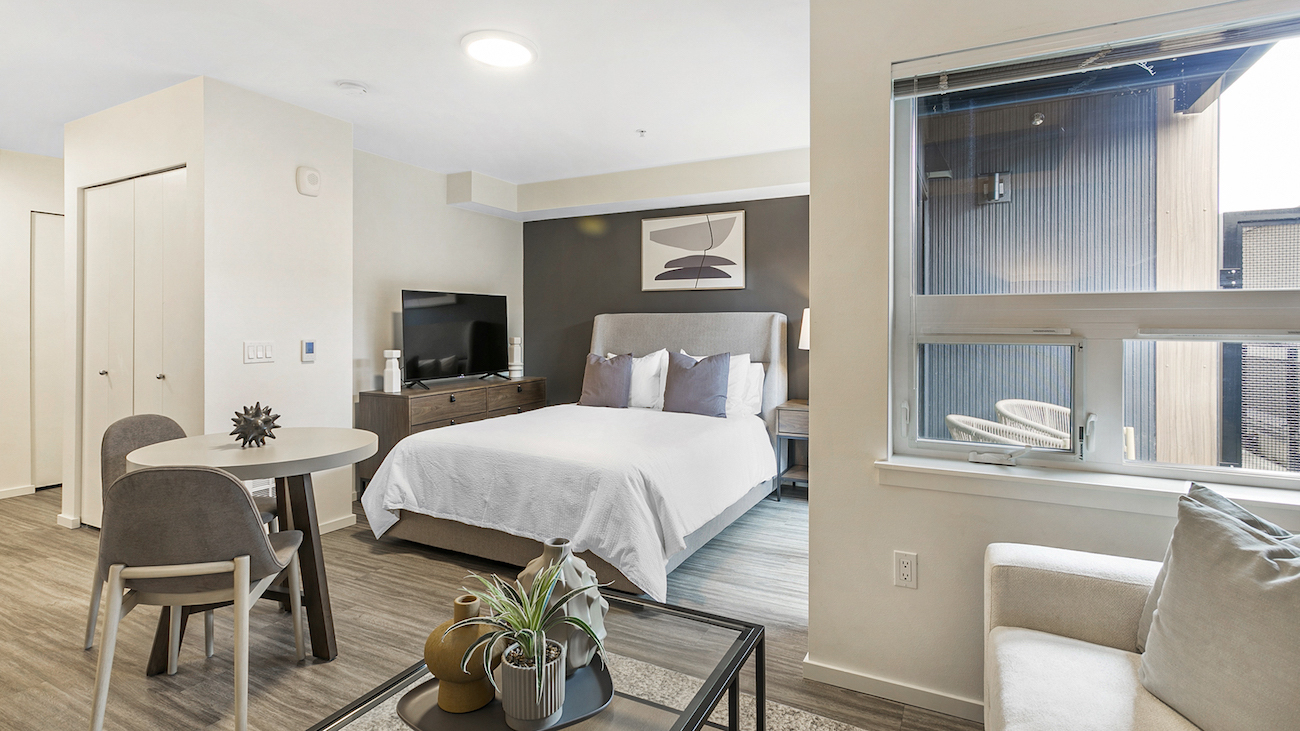
Month-to-Month Leasing: Convenience and Mobility On Your Terms

To anyone who’s ever moved before, you know that there are numerous challenges entailed:
- Finding a new place to live
- Making moving arrangements
- Packing up
- Forwarding your address
- Calling up your utility or cable provider to close your account
The list goes on and on. But for people who rent, there is yet another facet to consider: breaking your lease.
Once you’ve found the perfect apartment rental, most landlords or management companies require at least a one-year commitment – breaking the lease any sooner will almost guarantee that you’ll lose your deposit money. And some apartments won’t even consider renting to you if you can’t sign a one-year lease. But what about individuals who need the flexibility of a month-to-month lease?
Up until now, flexible leasing was a foreign concept: renters simply had to sign on the dotted line and hope they didn’t have to forfeit their deposits due to a broken lease agreement. With the demands of millions of people who need that flexibility – whether it’s due to a sudden job relocation, internship in a new city, or other reasons – there has been an increase in the temporary housing market across the United States. Let’s take a look at the main differences in month-to-month leasing versus traditional lease agreements – and how it may be worth considering for your next move.
Flexible leasing vs. traditional lease agreements
You need to move abruptly – but you have months before your lease expires. It’s likely you’ll lose money from not getting your deposit back and you now have to hire a mover, cancel your internet service, and pack up all of your worldly possessions. All too often, millions of people like you need to relocate at a moment’s notice – but aren’t sure how to go about doing so. This scenario affects working professionals, students, and business travelers, including but not limited to:
- Au Pairs
- Business Consultants
- Cruise Ship Workers
- Customer Service Agents
- Engineers
- Flight Attendants
- Foreign Service Officers
- Hotel Managers
- International Aid Workers
- Student Interns
- Tour Guides
- Traveling Nurses
- Traveling Publicists
- Writers
As you can see, the one thing these fields all have in common: the need for flexibility. And while nearly anyone can acquire a long-term rental fairly easily, it’s not always the best option for everyone – particularly for individuals who need to relocate for a job often and find new housing. That’s why flexible leasing for short-term rentals may be the answer – but let’s explore the differences.
Traditional leases
A traditional lease agreement defines a legally binding contract between two parties (a lessor and a lessee) that outlines the specific terms of renting property. In most scenarios, the lessee (tenant) is signing a standard lease – a document that officially outlines the terms under which one party agrees to rent property from another party (the lessor or landlord/property management), ensuring both landlords and renters their respective rights. Long-term apartment rentals with traditional lease agreements may be suitable for some individuals, particularly for those who plan on staying in the same neighborhood for many years to come. Traditional leases can help save you from a potential rent increase, as you’re locked into a monthly rate for a fixed term. However, these binding agreements can also pose many challenges for others – especially for people who need to move often or are looking for a short-term living arrangement.
Downsides of traditional apartment leases
- Lack of flexibility: As we’ve covered, not being able to move freely when you need to can create numerous problems. Besides the anxiety it causes, being bound by a standard leasing agreement can affect your job prospects, limit your ability to pursue careers or internships elsewhere, and force you to remain in a living arrangement or location you’ve simply outgrown.
- Hurting your credit score: Although it might not be the first thing you think of, breaking your lease can affect your credit score – particularly if you don’t pay the remaining balance when you move out. In addition, moving around from one traditional rental to another can also wreak havoc on your credit score, particularly in the case where realtors are running multiple credit checks for new applications as you frantically search for your new place. Damaging your credit score can also go way beyond your current living arrangement.
Once your credit report contains negative entries from breaking a traditional lease agreement, that listing will remain on your credit report for seven years.
These negative marks will impact your credit score – as well as your ability to rent another apartment, buy a home or car, obtain a credit card, or any other action that requires a good credit score.
- Forfeiting your security deposit: Even if you keep your home spotless and free from property damage, you can still wind up forfeiting your security deposit in a traditionally-leased apartment. In worst-case scenarios, some landlords will even charge a fee for damages and repairs to the apartment that weren’t covered by your security deposit if you leave before your lease ends.
- Unforeseen expenses: Most long-term apartment rentals come unfurnished. Furnishing a new apartment comes with its own price tag. Depending on how large your new rental is, you can wind up spending a small fortune on sofas, mattresses, bedding, and the amenities needed to live comfortably. And while it can be exciting to decorate your new digs for the first time, it can quickly add up if you’re moving all of your belongings constantly due to work relocation.
Don’t want to be bound to a restrictive lease? Find a furnished apartment with month-to-month leasing now!
Flexible leases
On the other hand, you have flexible leasing, also known as a month-to-month lease, which refers to a rental agreement that lasts for a one-month period. It is typically renewed automatically from month to month until the rental agreement is formally terminated by either the landlord/building management or the tenant. Usually, the landlord or building management requires at least 30 days’ notice to vacate.
The flexibility of this type of lease makes it appealing for a variety of reasons, but mainly because it doesn’t require the tenant to stay for a set period of time. This arrangement can be especially beneficial for working professionals, particularly if their line of employment demands recurring job relocation. However, it can also be advantageous to interns studying in a location other than their home base, professions that require frequent travel, people who are in-between residences, and folks who simply need to move abruptly.
Benefits of month-to-month leasing
Aside from being stuck in a restrictive lease, what are the main benefits?
- Flexibility and Convenience: Maybe your job takes you on the road often, or perhaps you’re in the middle of renovating your new home – but in the interim, your family needs a place to stay that’s a step up from a hotel. Whatever challenges life has thrown you, there is nothing like the convenience of flexible leasing. Unlike traditional long-term lease agreements, a month-to-month lease allows you the freedom and mobility to come and go as you please – without the stress of binding contracts, endless paperwork, and worst of all, limiting your potential.
Many modern month-to-month rentals now feature furnished apartments that take the guesswork out of relocating, plus the convenience of all-inclusive amenities, concierge services, and much more. You simply move in and start living – it doesn’t get simpler than that!
- Stress-Free Living: A temporary living situation does not need to be a stressful one. Millions of individuals just like you simply cannot commit to a long-term lease agreement, and that’s okay. With flexible leasing growing in popularity, there are numerous month-to-month rentals available to suit your lifestyle. But remember: not all flexible leasing is the same. If you choose fully-furnished rentals, you can save valuable time in your move and avoid the hassle of buying items for your temporary home.
- Seamless Housing Solution: Whether you work in a transient occupation or are in need of temporary housing, short-term leases may be the housing answer you’ve been searching for. Besides the convenience flexible leasing provides, it can also potentially save renters on other tangential costs, particularly if they’re fully furnished, move-in ready apartments. Forget about relocating your heavy mattress and couches cross-country every time you move: leasing a short-term rental that’s furnished can spare you the hassle associated with costly storage units and moving companies.
- No Commitment? No Problem: The increasing demand for flexible, month-to-month leasing has made flexible lease options much more accessible for people who don’t want to stick to one place. It’s now possible to score an apartment that not only provides a flexible lease but housing options that don’t penalize you financially or harm your credit score if you leave abruptly. Free from the commitments of traditional long-term rentals, many of these month-to-month units come fully furnished, which only adds to their appeal when apartment-shopping.
Flexible leasing with Landing: Living on your terms
Whether you’re a newlywed, a hard-working professional, a student intern, or all of the above, there’s no need to make your apartment hunt into a second job. Finding the right apartment to suit your lifestyle is simple with Landing: Our easy approval process allows you to lease instantly, so you can have your dream apartment in seconds, not weeks or months. Plus, once you’ve joined Landing, our membership benefits allow you to move easily between our homes—no additional applications needed. The best part? Our flexible month-to-month leasing provides you with the freedom, mobility, and convenience of a short-term lease, so you can leave at a moment’s notice. Landing has both furnished and furnished apartments rentals in over 375 markets in the U.S., so wherever you’re headed, there is an apartment ready for you.
However, “short-term,” doesn’t mean “short on luxury.” Our apartments are anything but. Curated by top interior designers, each luxury rental unit is move-in ready and fully furnished, including everything you need to call your new apartment home. From plush towels and bedding to high-end decor, you’ll appreciate our attention to detail—so much that you might want to stay longer than you originally intended.
Say goodbye to a fixed term and live on your terms. Find a furnished apartment with flexible leasing with Landing now!









